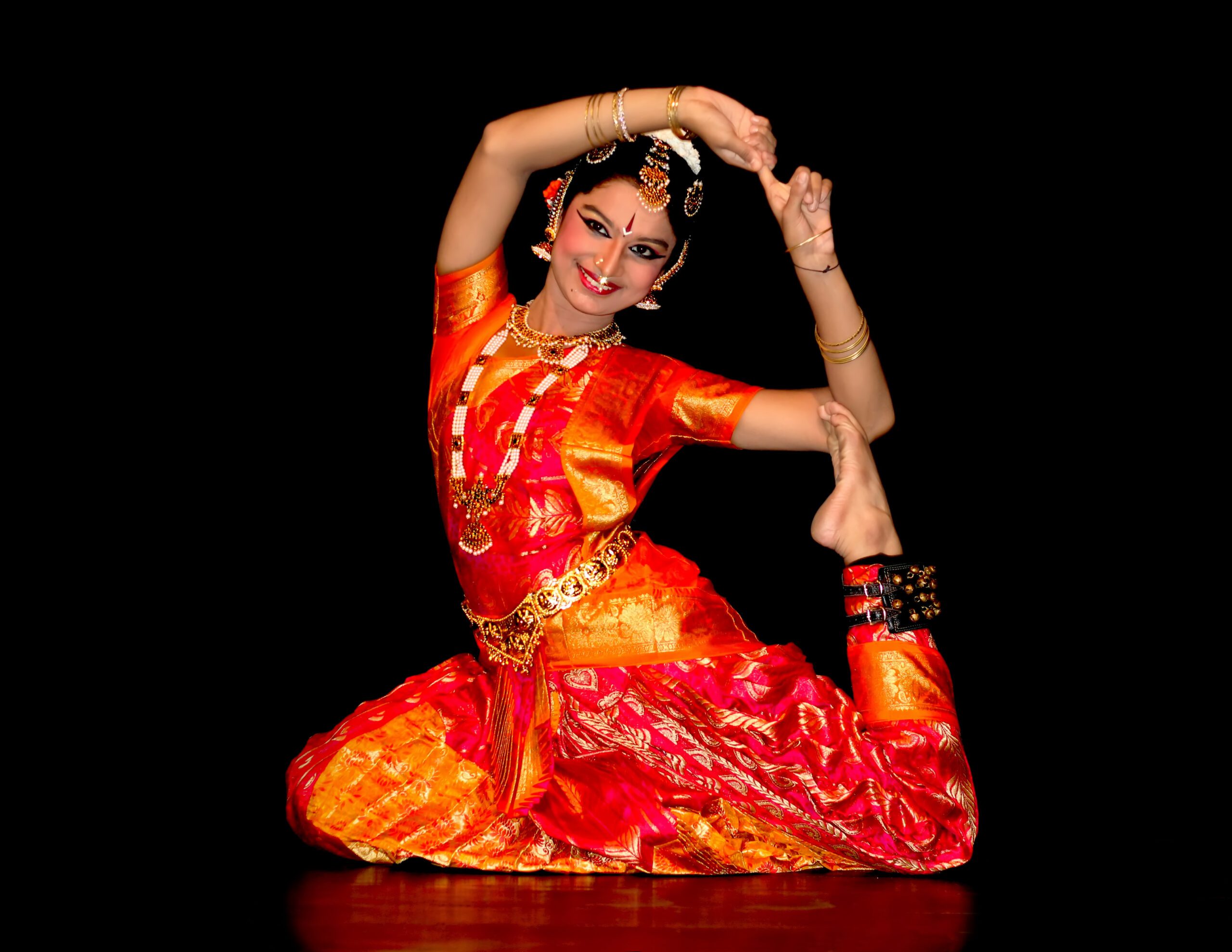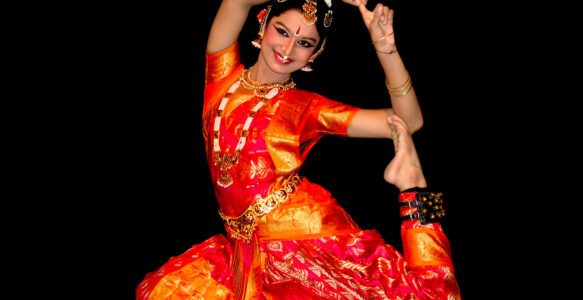Indian Classical Dances
Indian classical dances has history of 2000 years and its root can be traced to Natya Shastra of Bharat Muni (200 BC). The term ‘classical’ or ‘Shastri’ was introduced by Sangeet Natak Academy to denote the Natya Shastra based performing arts. Hand gesture, Mudras and facial expressions are integral part of Indian classical dance. Artists use hand gesture to narrate a story or demonstrate concepts like objects concepts nature and emotions. Bharata discusses and analyses the fundamental units of movement. The movement with one foot is generally termed as Chari while movement with both feet is called Karanas.
Indian classical dances are differentiated on many concepts like Nritta or Natya on the similar note it is also differentiated based on Lasya or Tandava. Sangeet Natak Akademi considers eight Indian dance styles Bharatanatyam (Tamil Nadu), Kathakali (Kerala), Odissi (Odisha), Kuchipudi (Andhra Pradesh), Manipuri (Manipur) , Kathak (Uttar Pradesh), Mohiniyattam (Kerala) and Sattriya (Assam) as Classical forms.
KATHAK
Word Kathak is derived from Kathaks a caste of story-tellers in temples of north India, who used to perform using gestures and songs. Kathak evolved as dance form during 15th and 16th centuries with the spread of the Bhakti Movement. Religious connection of Kathak seen with respect to Vaishnav Themes. This dance form developed it’s current features during Mugal era in India where it absorbed features of Persian and Central Asian dance and evolved as distinct style. Current form ows Ras leela dances of Braj. Ras leela and Radha Krishna are considered central theme of this dance form.
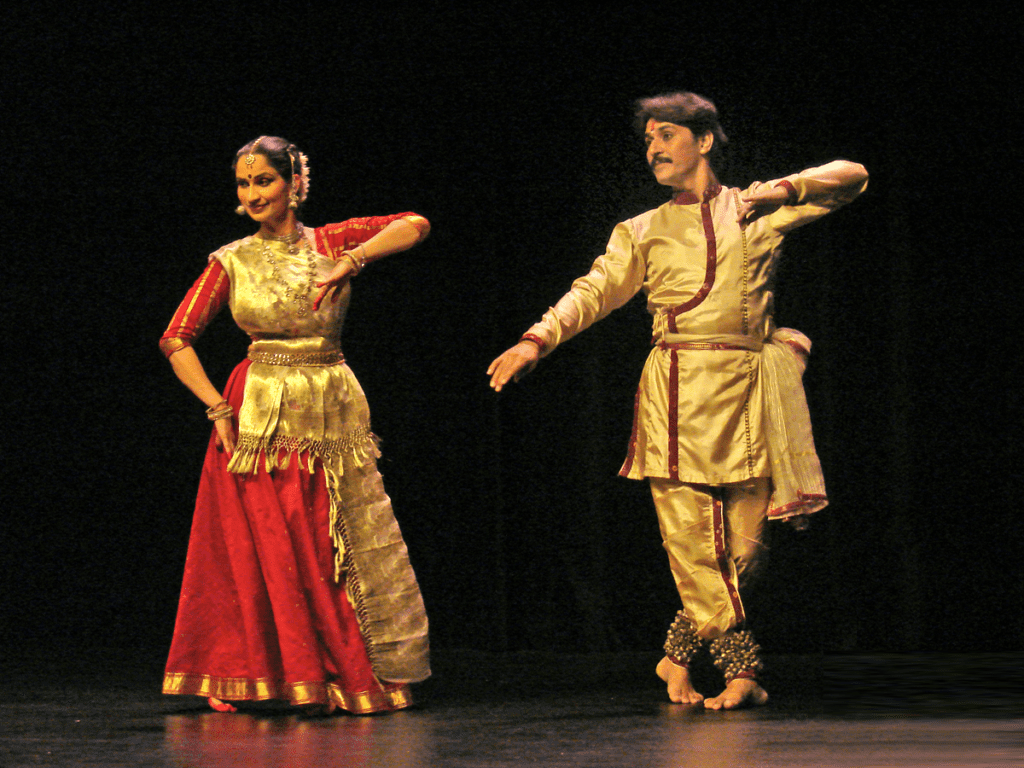
Image By Jean-Pierre Dalbéra from Paris, France – Danse Kathak (musée Guimet, Paris), CC BY 2.0, https://commons.wikimedia.org/w/index.php?curid=5854583
Features of Kathak
Kathak is performed with fast footwork and straight legs and knees bending is avoided or very minimal. fast spins and jumps are highly used in Kathak performances.Artists make ample use of eyebrows or bhavas. Kathak conceives of space only in straight lines. There is only a front-back treatment of space. Ankle bells are essential part of decoration Artists perform in Indian and Persian costumes. Kathak is attached to Drupad as well as Khayal. The differentiations among Lasya and Tandava and among Nritta and Abhinaya were held together in Kathak.
Performance starts with ‘Vandana’, Thaat, Jugalbandi which is a competitive gesture between dancer and tabla player. This dance form gives freedom to the dancers which resulted in evolution of many Gharanas attached to this dance form. In fact this is the only Indian classical dance form that has Gharanas.
Prominent Personalities
Shambhu Maharaj,Sunder Prasad, Mohanrao Kallianpurkar, Birju Maharaj, Damayanti Joshi, Sitara Devi, Roshan Kumari, Rohini Bhate
KATHAKALI
Kathakali is one of the oldest theatre form of India. It was originated in state of Kerala and is dervied from word Katha meaning story and Kali meaning play. It combines five elements of fine art namely Nritya, Nritta, Natya, Geeta and Vaadya.
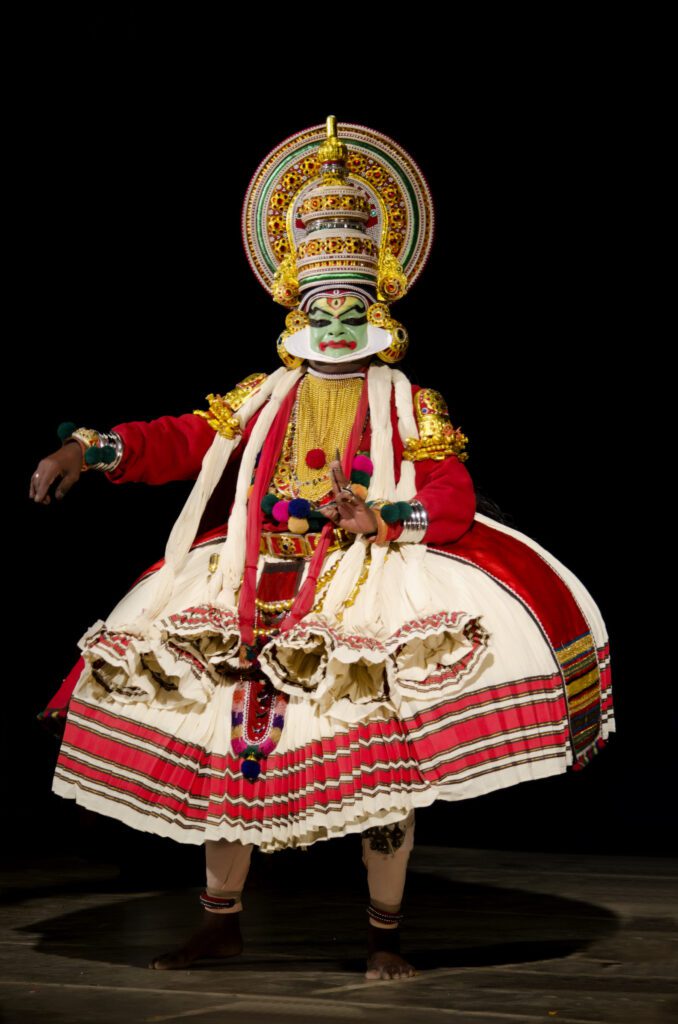
Image By Prathyush Thomas – Own work, GFDL 1.2, https://commons.wikimedia.org/w/index.php?curid=38140232
Features of Kathakali
Dance starts with continuous sound of drums. Many features of Kathakali is inspired from Koddiyattam. Its a form of dance and drama both. Its themes are taken from Mahabharata, Ramayana, Puranas etc. Kathakali is a male art male and female both characters are also played by males. Kathakali is traditionally enacted outdoors. Kathakali is a group presentation, in which dancers take various roles in performances traditionally based on themes from Hindu mythology, especially the two epics, the Ramayana and the Mahabharata.
Kathakali has elaborate costume, make up is very detailed and complex. Different colours of painting are used on face in this dance form which portray different characters of the individuals. Like green is used for noble characters. yellow is used for women and saints. Red and black are used for evil and uncivilised characters.
The technique of Kathakali includes a highly developed language of gesture, through which the artist can convey whole sentences and stories. The body movements and footwork are very rigorous.
Prominent Personalities
M V Nair, Kalamandalam Gopi and Kalamandalam Ramakutty Nair.
KUCHIPUDI
Kuchipudi, originally called Kuchelapuri or Kuchelapuram is named after a village in Krishna district of Andhra Pradesh.It evolved during Bhakti (devotion) movement beginning in the 7th century AD. It is known for its graceful movements and its strong narrative or dramatic character.
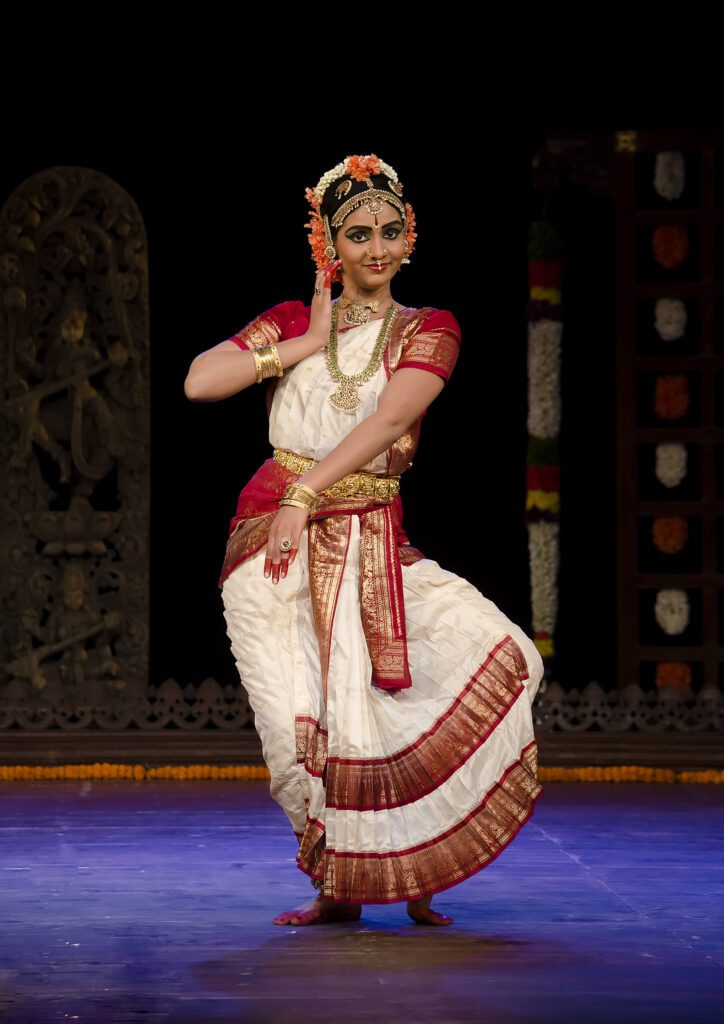
Image By Augustus Binu, CC BY-SA 3.0, https://commons.wikimedia.org/w/index.php?curid=37301868
Features of Kuchipudi
It begins with invoking to Lord Ganesha. The technique of Kuchipudi is called Kanyakole and it makes use of fast rhythmic footwork and shapely body movements. Speech is also ised in performance of this dance form. It is performed on classical Carnatic music and instruments like violin , mridangam and clarinet are commonly used during performance.
Sutradhar is very important in this Indian classical dance form. He/she introduces the characters and theme of play. Tarangam is one of the famous feature of this Indian classical dance form in which the performer dances on the edges of a brass plate, while sometimes also balancing a pot of water on the head.
Prominent Personalities
Raja Reddy, Radha Reddy, Swapansundari, Satya Narayan Shastri, Laxmi Narayan Shastri and Sonal Mansingh.
MANIPURI
It is known as the youngest and oldest dance form in India. Although it has an ancient origin, its present form is fairly new and is the youngest of all classic dances. Lai Haroba and Khamba Thoibi are two traditions of Manipuri dance. Initially this dance was not related to couple dance based on local themes and its abstract design symbolised the tangled snake. In 17th Century this dance form came under Vaishnav influence and performances were based on themes from Puranas and Gita Govinda.
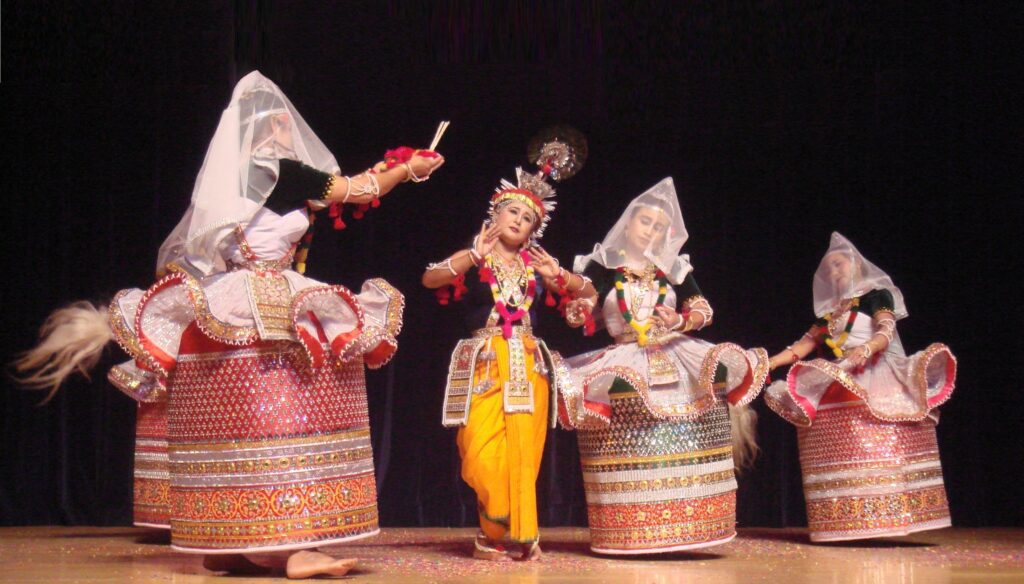
Image By https://www.flickr.com/photos/matsukin/ – https://www.flickr.com/photos/matsukin/486353380/, CC BY 2.0, https://commons.wikimedia.org/w/index.php?curid=4517518
Features of Manipuri
Manipuri drum (Punga) is soul of this dance form. This is mainly a female dance form in which female uses thin veil and long skirt and depict Randha and Krishna. This Indian classical dance form uses slow movements and gentle footwork. Round movements are highly used. Dance has soft appearance jerks, straight line sharp edges are not used.
Facial movement is minimal, hand and knee, ankle positions and foot movement are very important part of this dance form. Pena, Khartal, Bansuri and small cymbals are musical instruments used in performances of this Indian classical dance form.
Prominent Personalities
The Jhaveri sisters, Nayana, Suverna, Darshana and Ranjana Jhaveri.
MOHINIYATTAM
Word Mohiniyattam is comes from Mohini meaning woman who enchants onlookers and attam meaning dancer. Word literally means dance of the enchantress. Mohiniyattam is traditional dance form of Kerala and was developed by Tamil nattuvanar Vadivelu. It is considered as usion of Kathakali and Bharatnatyam and was developed from the Devadasi system in Kerala temples.
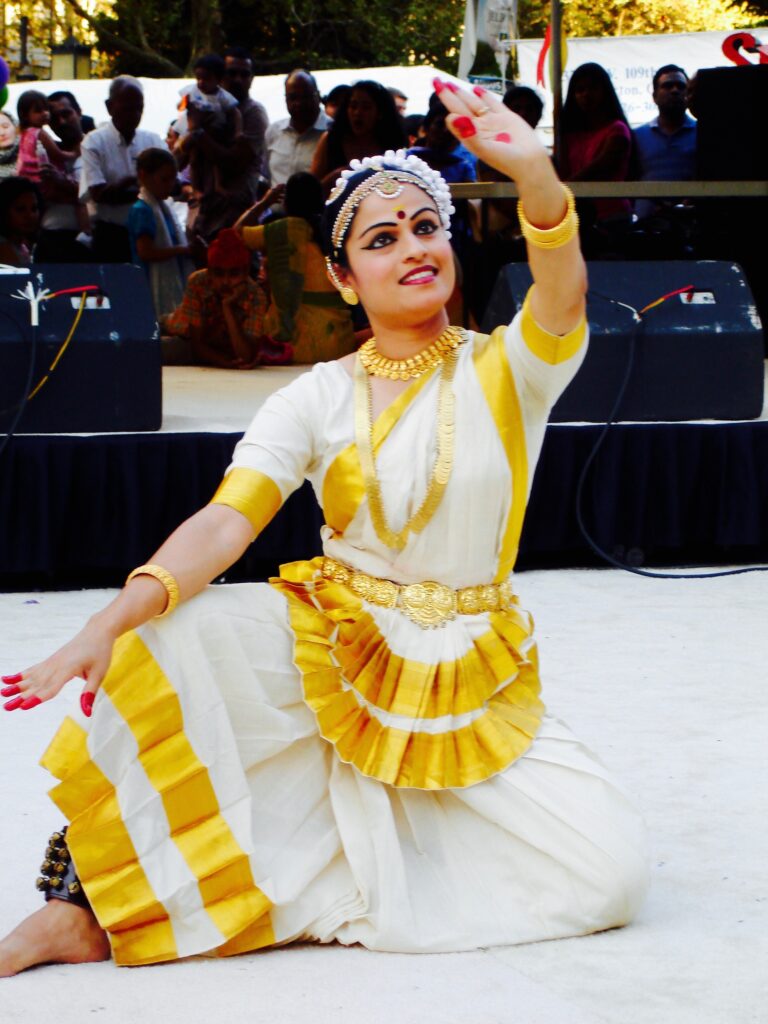
Image By icaportland – Mohiniyattam 4, CC BY-SA 2.0, https://commons.wikimedia.org/w/index.php?curid=50517018
Features of Mohiniyattam
It is a solo dance from and focus is Lasya dominant is generally performed as solo recital by females. Theme of dance is mainly love and devotion to God. This Indian classical dance form is related of Lord Vishnu or Krishana. There are 40 Atavakul (basic movements) in this dance form. White and Gold color costumes are used in performances.
Soft, sliding and gentle footwork is used in this dance form. Heavy stamping and rhythmical tension is completely avoided in this dance form.
Prominent Personalities
Jayaprabha Menon, Hema Malini, Sunnda Nair, Kalamandalam Sugandhi
ODISSI
ODISSI is referred as Odra Magadhi in Natya Shastra. It is one of the oldest dance form of India . It’s evidence can be found in Udaigiri caves of 1st century BCE. This dance form is closely related to temple sculptures. It’s poses resembles to famous temple sculptures. This dance form has 3 sub-genres namely Mahari (devadasi), Gotipura (male) and Nartaki (royal courts).
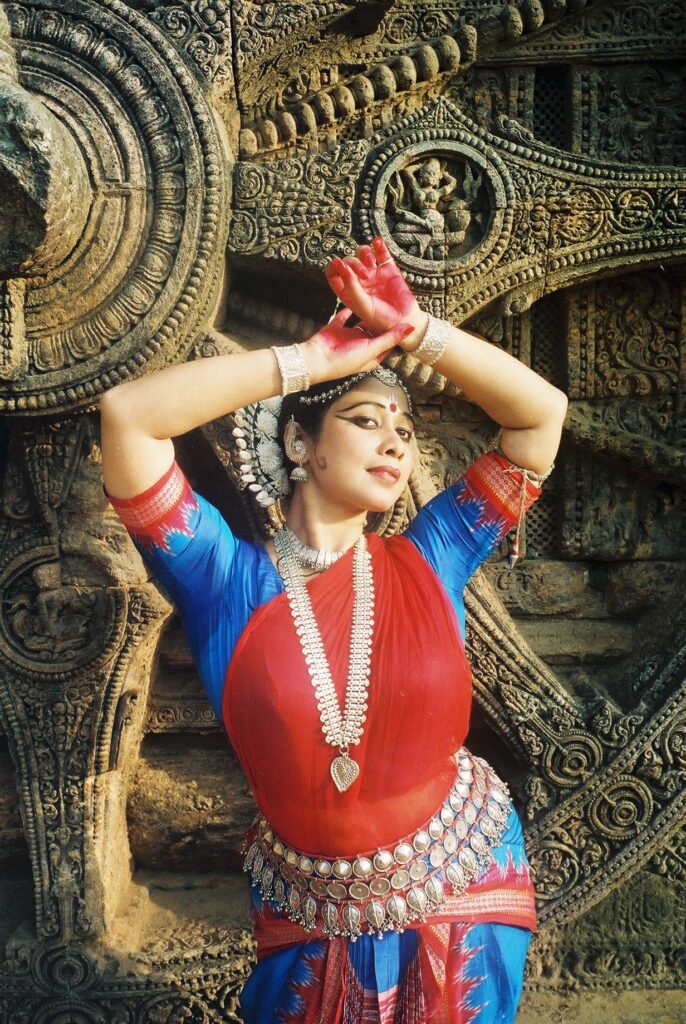
Image By Ratanmaitra – Own work, CC BY-SA 3.0, https://commons.wikimedia.org/w/index.php?curid=17135181
Features of Odissi
Sculptural body movements are highly used in this Indian classical dance form. Poses called Bhanga are stuck during dance which gives sculpture look in the performances. Another poses are called Abhanga, Tribhanga, Atibhanga etc. This dance form also relates to Vaishnav theme and Gita Govinda. It has 4-5 elements which include – Mangalcharan and Bhoomi pooja at the beginning and Moksha at the end. Foot movement, hip deflection , facial expression are important feature of this dance. The Odissi dance uses silver jewellery.
The dancer wears a longer necklace, armrests, bracelets, waistband, anklets etc. A dancer of Odissi has an elaborate hairstyle in a knot decorated with the Tahiya which represents a temple tower. Odissi music is ussed in performances.
Prominent Personalities
Madhavi Mudgal, Rekha Tandon, Sreyashi Dey, Kelucharan Mahapatra, Sanjukta Panigrahi etc.
BHARATNATYAM
Bharatnatyam originated in Tamil Nadu and is related to Devadasi system, Inspiration of dance comes from sculptures of the ancient temple of Chidambaram and Tanjore. It is also referred to as artistic yoga and Natya yoga. It originates from the words Bhava (phrase), Raga (music), Tala (rhythm) and Natya (classical Indian musical theatre). It has been nourished in temples and courts of southern India since antiquity and was handed down from generation to generation.
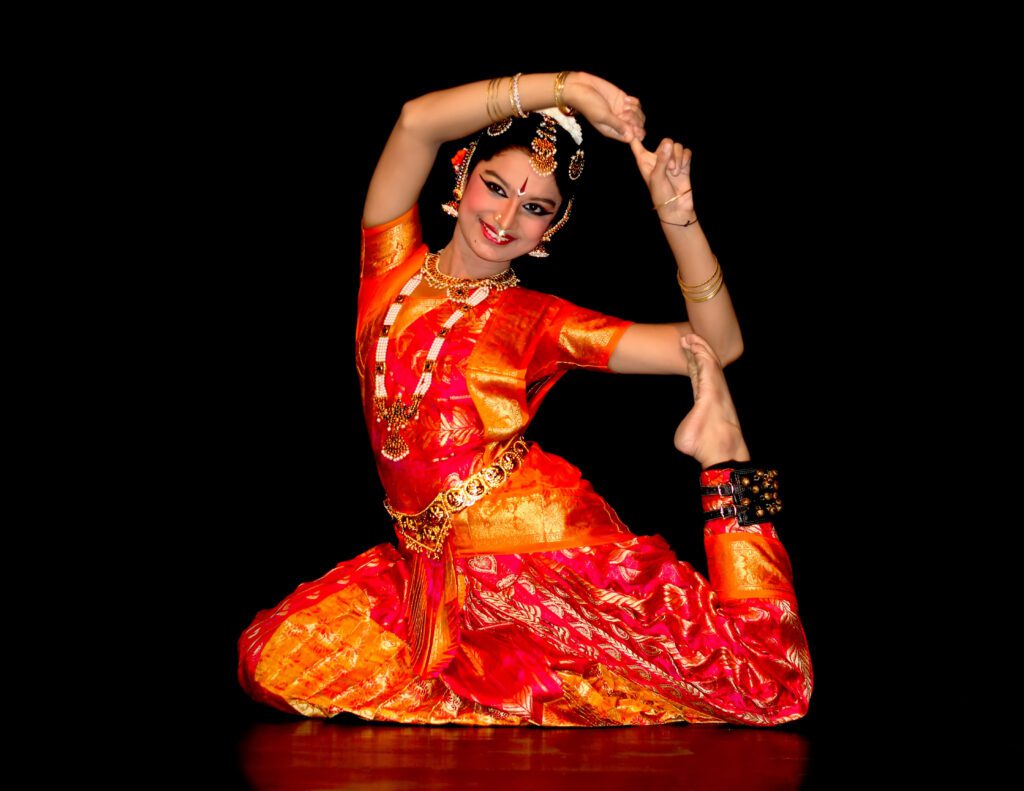
Image By Kamranahmedar – Own work, CC BY-SA 4.0, https://commons.wikimedia.org/w/index.php?curid=39268838
Features of Bharatnatyam
This Indian classical dances is a solo dance form generally performed by females. This is Only dance form related to Shaivite and is inspired from Natraja and Chola temples of Tanjore. It start with ‘Alarippu’ and is concluded with ‘Tilhana’ and ‘Shloka’. Performances mainly focuses on Abhinay part. Movement of dance resembles to movement of dancing fire flames. Bended knees are used in performances and triangular visualisation of body composition is shown. Mridanga, Cymbals and tambura are used as musical instruments in this dance form.
Prominent personalities
Mrinalni Sarabhai, T Balasraswati, Mallika Sarabhai, Padma Subhramaniam, Geeta Chandran
SATTRIYA
Sattriya is the another Indian classical dance form. The origin of Sattriya is found in the 500-year-old theatrical tradition nurtured in the Vaishnava monasteries of Assam called sattras. It has been extracted from a massive organization of theatrical activities that constitutes Ankiya Bhaona form. The present shape of this dance form is attributed to Assamese Vaishnav Saint Sankardeva Srimanta.
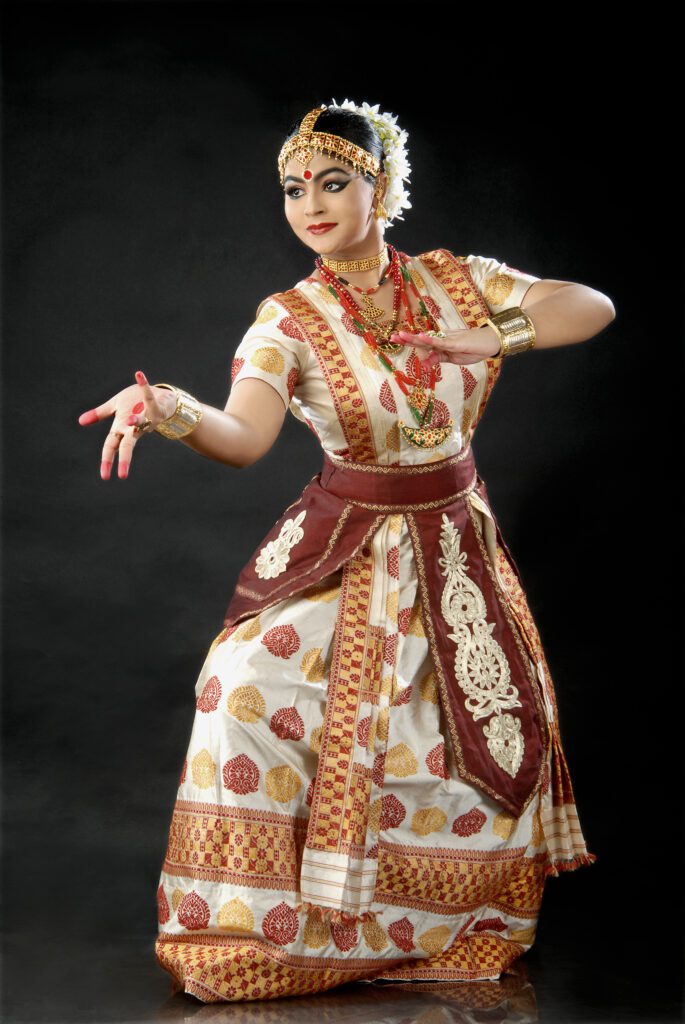
Image By Sattriyadance critic – Own work, CC BY-SA 3.0, https://commons.wikimedia.org/w/index.php?curid=33081522
Features of Sattriya
It is performed on music compositions called borgeets (based on ragas). Khole taals and flutes are highy used musical instruments in performances. Traditionally this dance form was used by male monks called Bhokots but now Its is performed stage by male and female both. This form also includes features of local dance like Bihu.
Prominent personalities
P P Bohra, Maniram Dutta
To learn more about Indian Art and Culture visit Indian art and culture
Learn about Animal with largest brain

